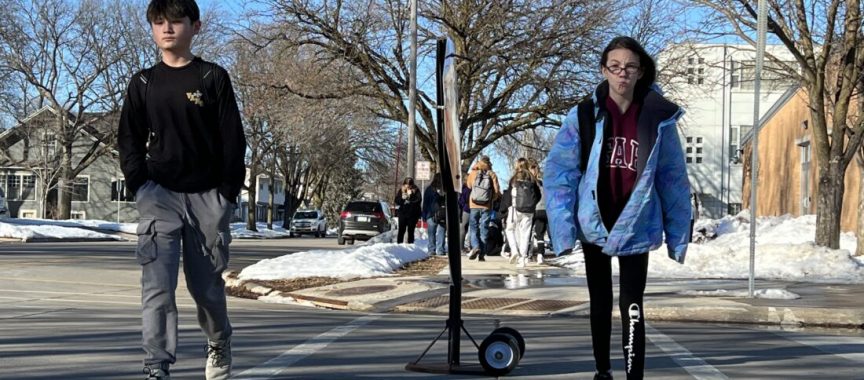The City Council of Webster City voted Monday to accept a study outlining plans to improve safety for students walking or riding bikes to school in Webster City.
Chase Cutler of H.R. Green, the consulting firm which designed the study and submitted the final report, made a presentation outlining how the study was conducted, and its broad conclusions and recommendations.
Is it safe to walk to school in Webster City? Generally, yes.
But Cutler says there’s room for improvement.
The study, completed at the request of the Iowa Department of Transportation and City of Webster City, looked at existing traffic levels, traffic controls, and road geometry in neighborhoods near five sites: Webster City Middle School, St. Thomas Aquinas Catholic School, Webster City High School, Pleasant View Elementary, and Sunset Heights Elementary. Based on data collected during the study, the report recommends minor, but specific, changes to streets, and pedestrian crossings in Webster City.
Cutler praised the “bus scramble,” the weekday closure of Elm Street between Des Moines and Bank streets each morning and afternoon which creates an auto-free safe zone for buses and students, saying it’s “working well.”
He made special reference to the corner of Des Moines and Water streets, between St. Thomas Aquinas and Webster City Middle schools, noting that a high volume of car and pedestrian traffic, and the present street and pedestrian crossing arrangement gave rise to “10 vehicle conflicts and eight pedestrian conflicts.”
Nearly all these conflicts could be resolved by closing the Des Moines Street median at Water Street, and building a raised pedestrian crossing there to give greater visibility to pedestrians, and cause cars to slow down as they approach it, he suggested.
The study also found that there’s no pedestrian crossing on Des Moines Street connecting Pleasant View and Brewer Creek Park. Speed recorders revealed drivers regularly exceeding the 25 mph speed limit along this stretch of Des Moines Street, adding to the danger. The study suggests more crossing guards be employed along Des Moines Street — at present there’s only one, at the corner of Elm and Des Moines — and that those crossing guards wear safety vests and carry stop paddles to increase their visibility to drivers.
To ensure they observed and measured typical conditions, H.R. Green selected an ordinary school day for its field work: Wednesday, May 25, 2022. Movement of traffic and students to and from the five schools was observed from 6.30 to 8.30 a.m. and 2 to 4 p.m. Radar speed recorders were set up in 12 locations. Automobile speed data was collected for 24 hours to obtain a feeling for normal speeds on the streets, both during and outside school hours.
Not that long ago, children routinely walked or rode bikes to school. Today, that’s no longer the case. This didn’t happen overnight, but it’s become self-perpetuating. As road traffic increased, parents adopted the notion it was unsafe for children to walk or bike to school. As a result, parents began driving students to school, adding to traffic volume and congestion, as well as parental stress and busyness.
In 1969, 48% of U.S. children 5-14 years old usually walked or biked to school. By 2009, just 13% did.
The report identified three potential sources of federal and state funding to pay for the recommended improvements, including the State of Iowa’s Transportation Alternatives Program (TAP), Iowa DOT’s Office of Traffic & Safety, and Local Road Use Tax Funds.
The school district and city will now consider which safety improvements to make, how to pay for them, and when they can be implemented.
View this article as it originally appeared in the Daily Freeman-Journal.
Last modified: February 8, 2023

